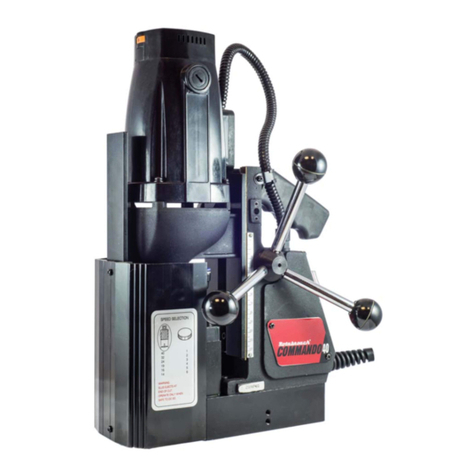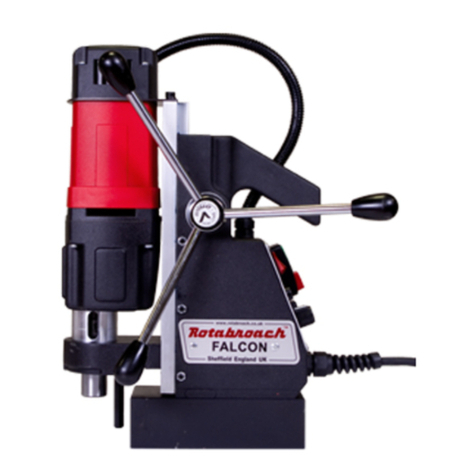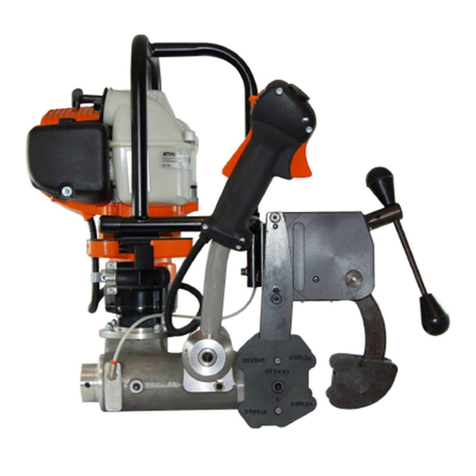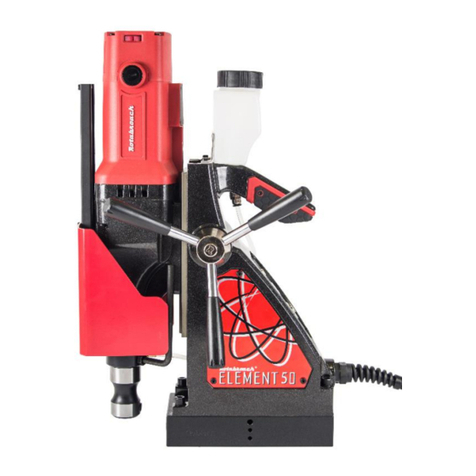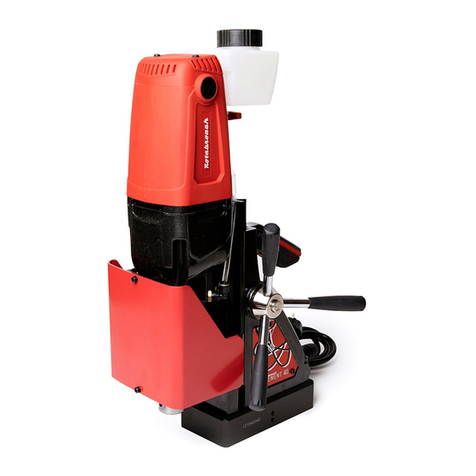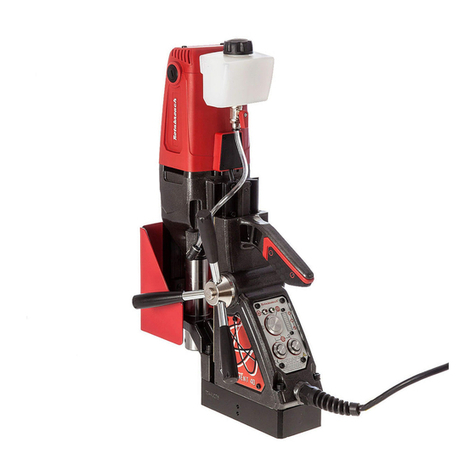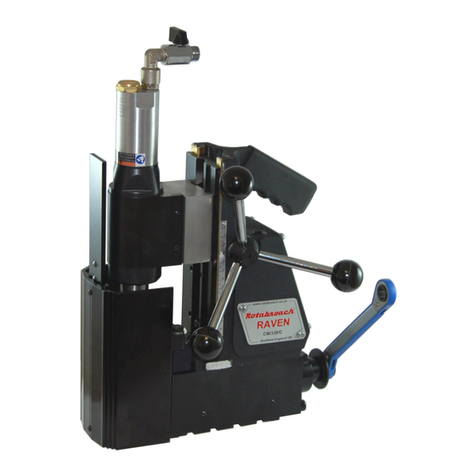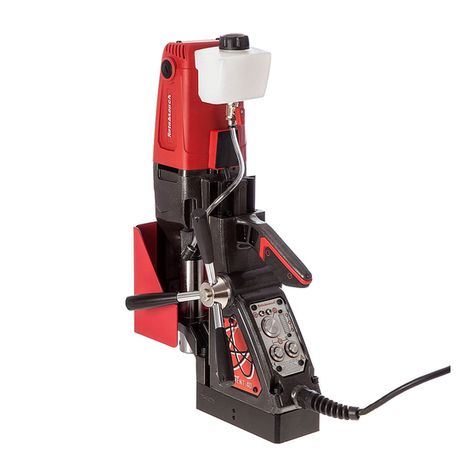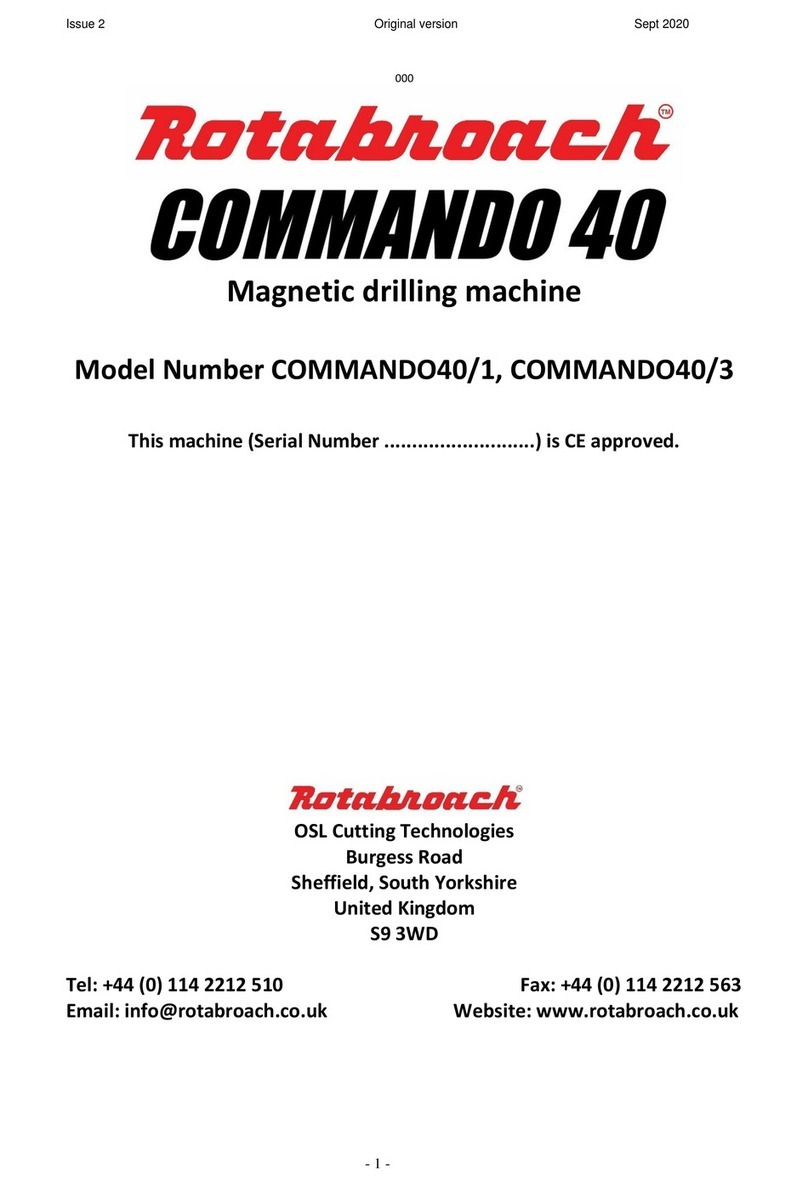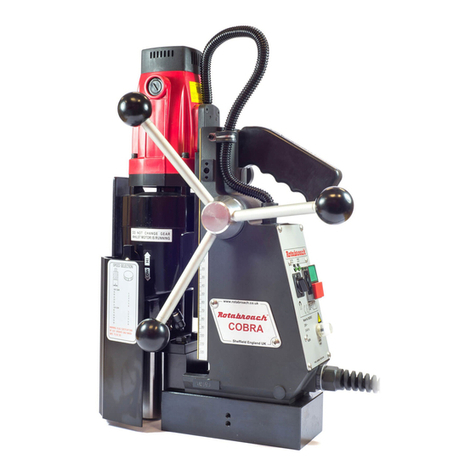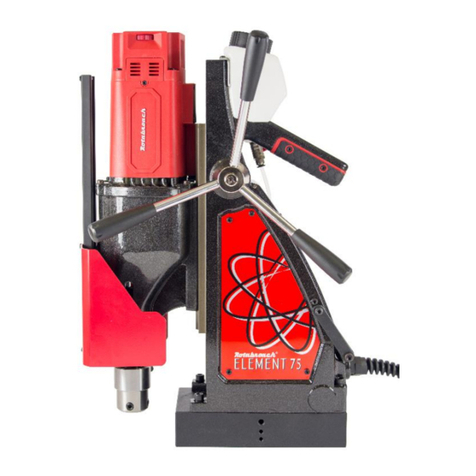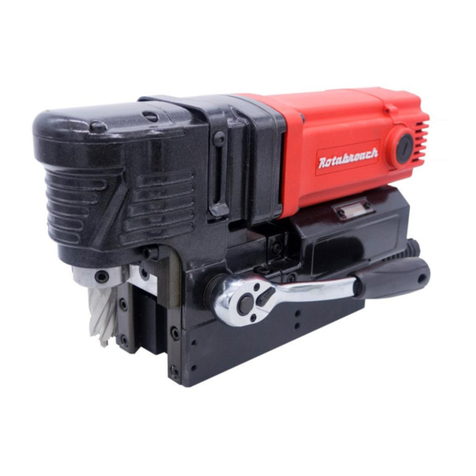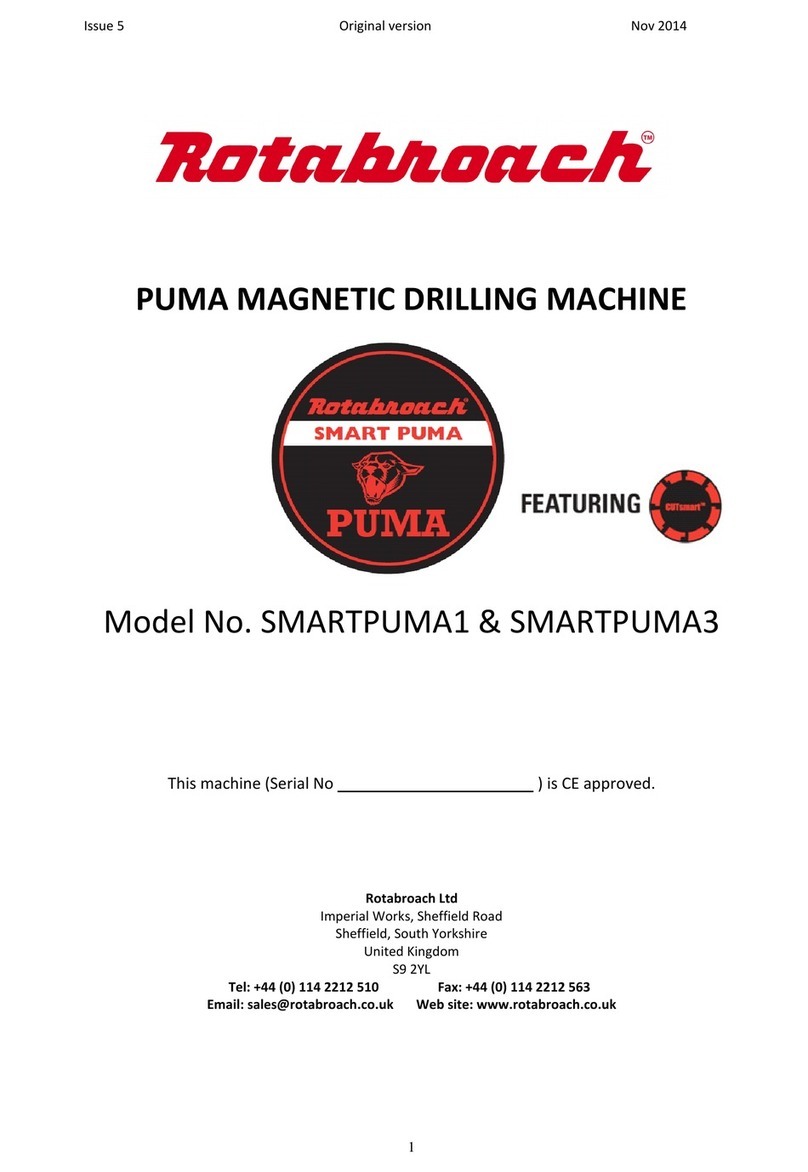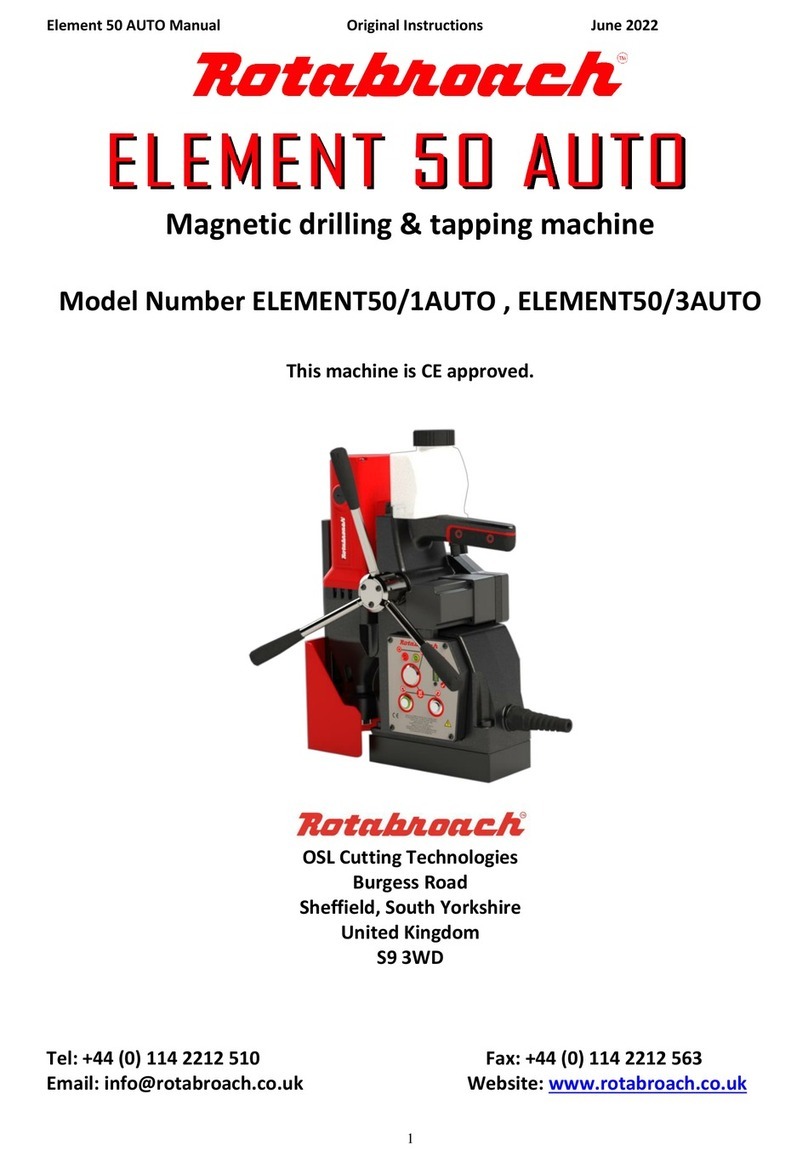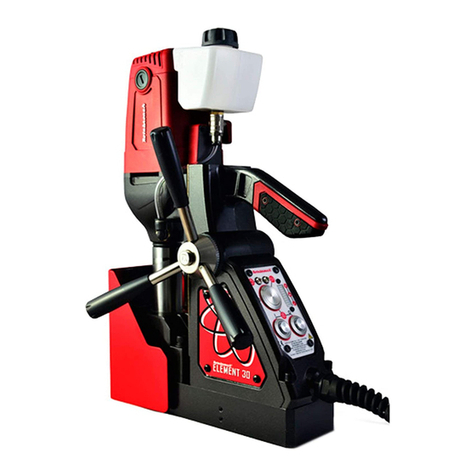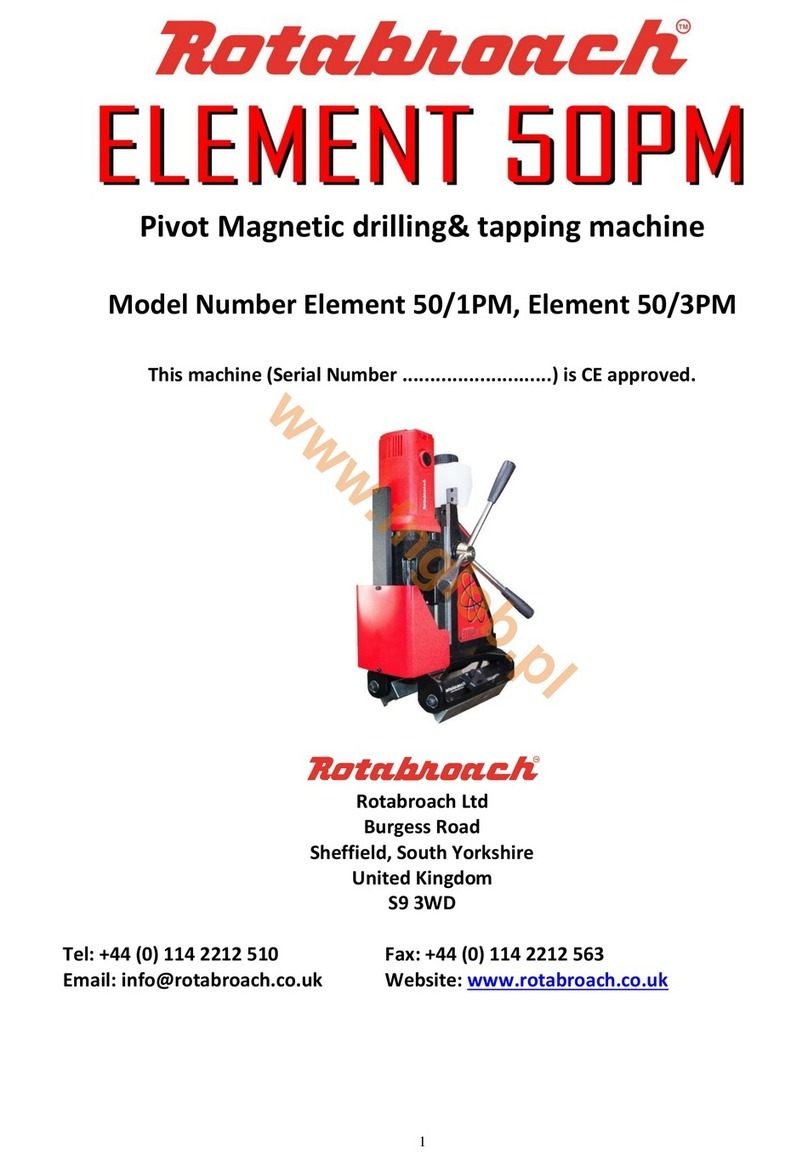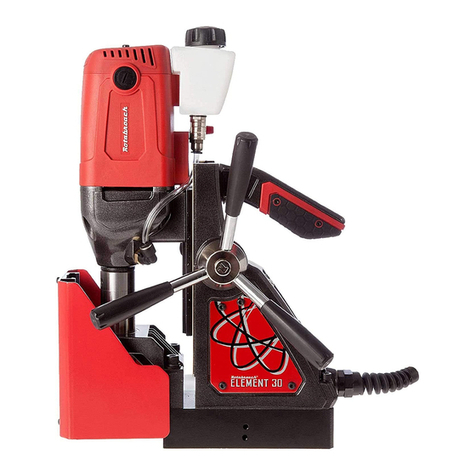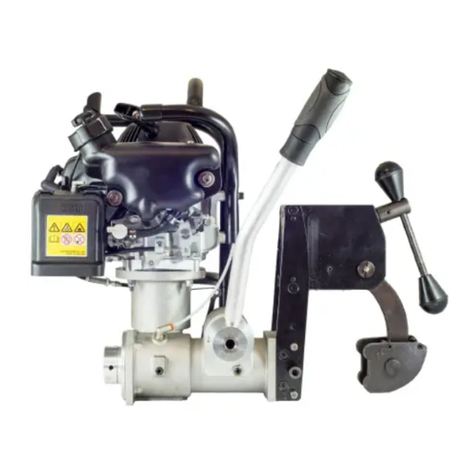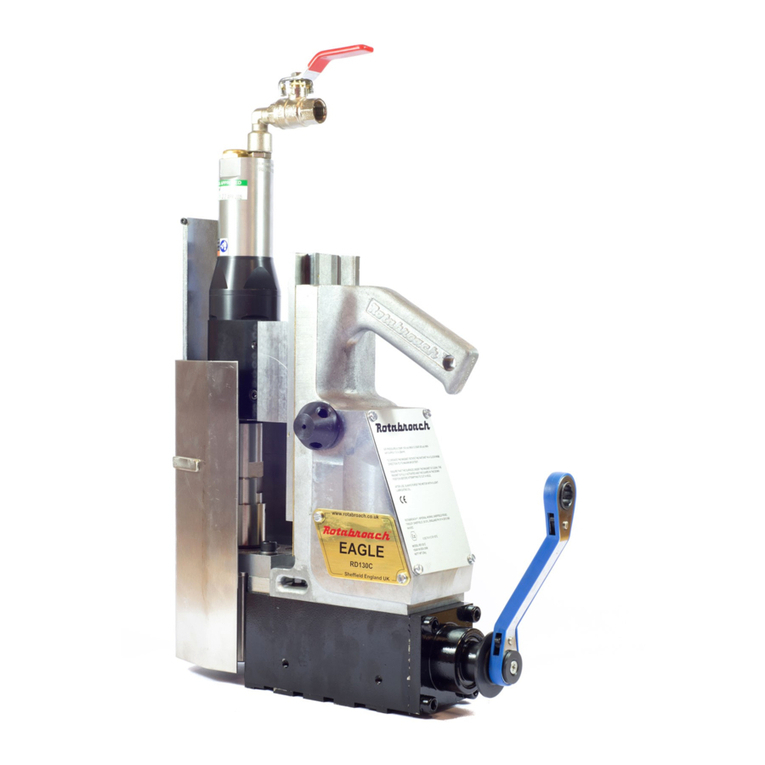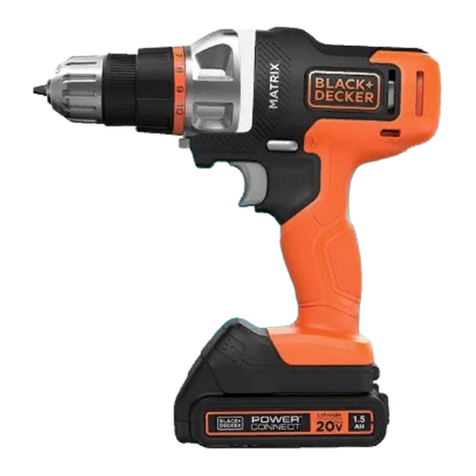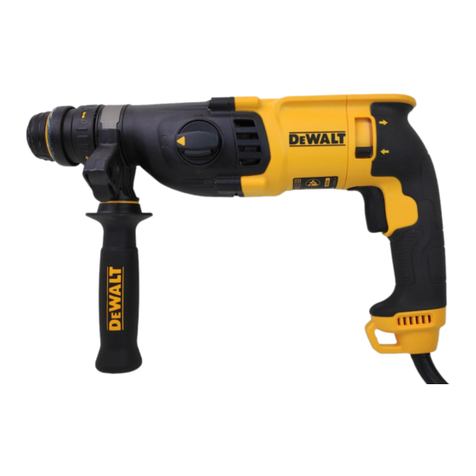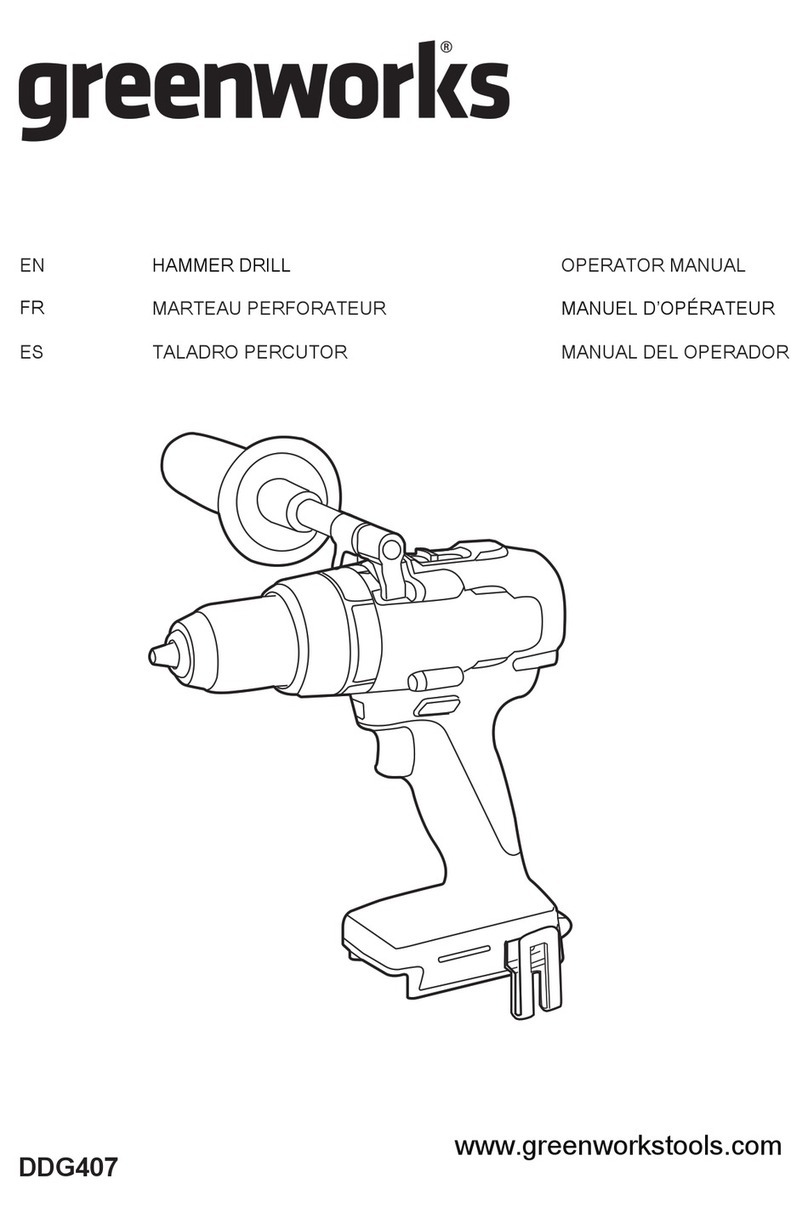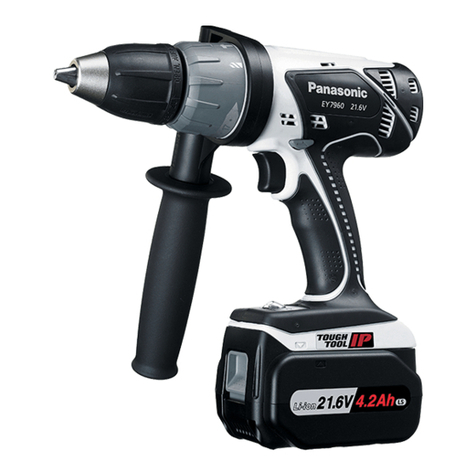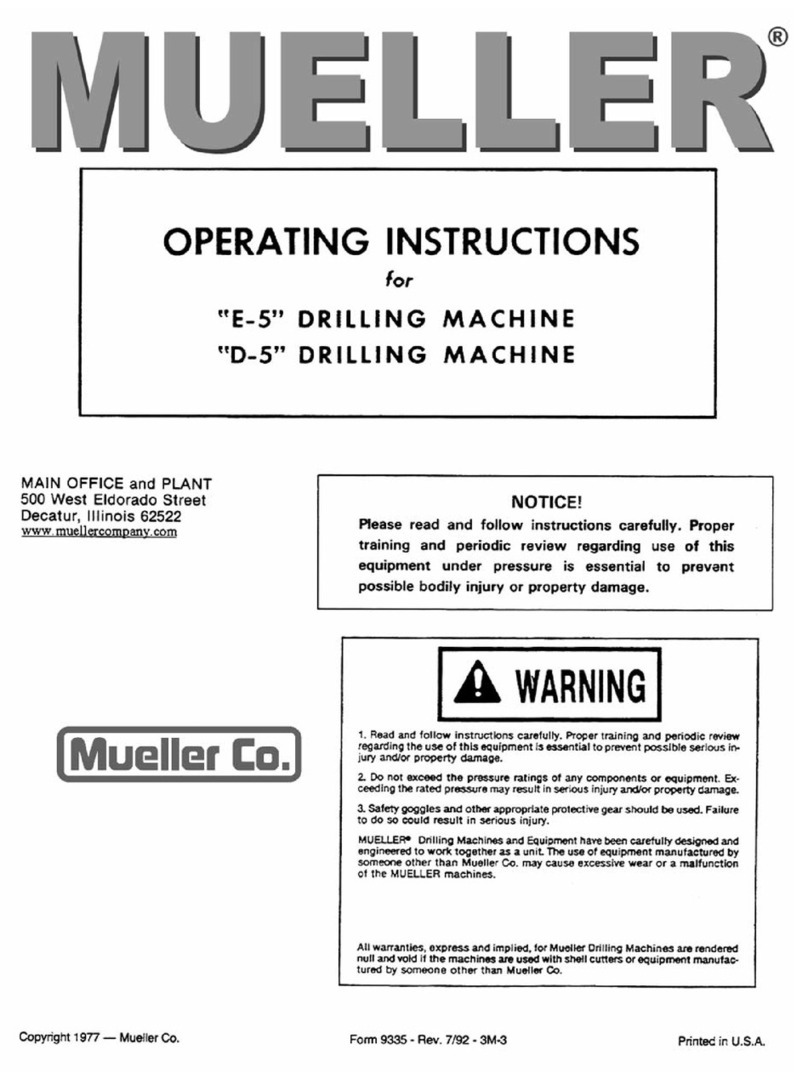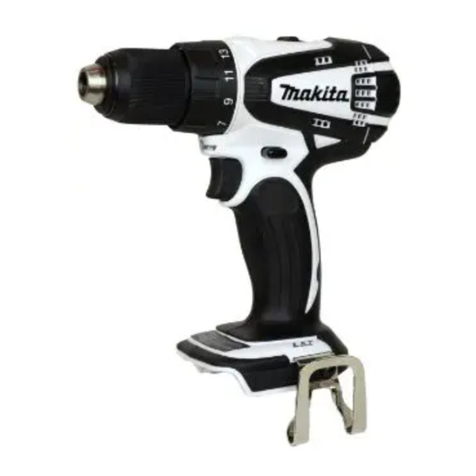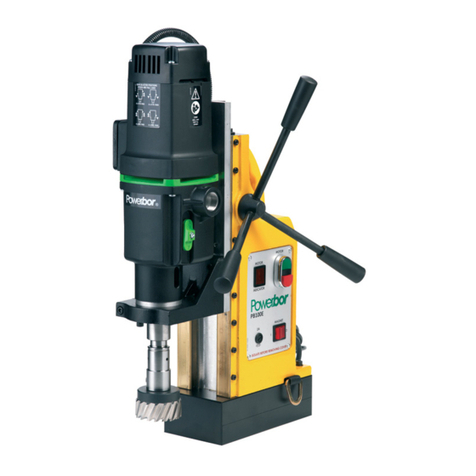Issue 10 Original version Apr 19
- 6 -
10. Form the habit of checking to see that keys and adjusting wrenches are removed from the tool
before turning it on.
11. Never operate the machine if parts are missing or damaged.
12. Never direct jets of water or flammable liquids over the drill.
13. Operator must be physically able to handle the weight of the machine.
14. Operator should be trained in the use of the machine.
15. If the machine is accidentally dropped, ALWAYS thoroughly examine the machine for signs of
damage and check that it functions correctly BEFORE resuming drilling.
16. ALWAYS ensure when using the machine in an inverted position that only the minimum amount of
coolant is used.
17. Keep work area clear - cluttered areas and benches invite injuries.
18. Consider work area environment;
•Keep work area well lit (500 Lux recommended).
•Do not use tools in the presence of flammable liquid or gases
•Ensure there is adequate space to gain access to the pneumatic supply and the on/off valve.
•Regularly clear the work area and machine of swarf and dirt, paying particular attention to the
underside of the magnet base.
19. Do not force the machine. It will do the job better and safer at the rate for which it was intended.
20. Use the right tool;
•Do not force small tools to do the job of a heavy duty tool.
21. When using the drill, always ensure a safe operating distance from any swarf and do not reach into
the cutting area, or near the cutter, when the machine is running.
22. Do not overreach! Keep proper footing and balance at all times.
23. Cutting tools may shatter, ALWAYS position the guard over the cutter before activating the
machine. Failure to do so may result in personal injury.
24. Apply light pressure when commencing to cut a hole until the cutter is introduced into the work
surface. Pressure can then be increased sufficiently to load the motor. Excessive pressure is
undesirable, it does not increase the speed.
25. Use Personal Protective Equipment (PPE) when using this machine;
•Use safety glasses to prevent debris from damaging eyes.
•Use ear defenders or ear plugs for hearing protection.
•Use face or dust masks if cutting operations create dust.
•Use protective gloves to prevent swarf or debris cutting the skin.
26. Dress properly;
•Do not wear loose clothing or jewellery; they can be caught in moving parts.
•Non-skid footwear is recommended when working outdoors.
•Wear a protective hair covering to contain long hair. This will reduce the risk of entanglement.
27. Maintain tools with care;
•Keep cutting tools sharp and clean for better and safer performance.
•Regularly check the machine for any wear or damage.
•Ensure the machine is clean and free from debris prior to use.
•Remove from the pneumatic supply prior to any maintenance.
